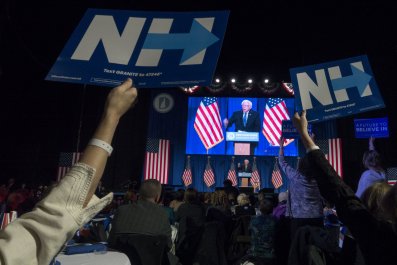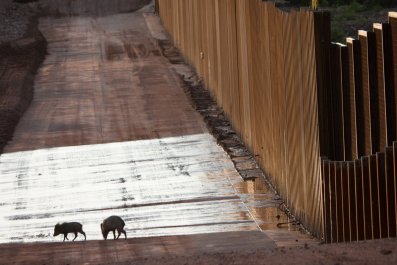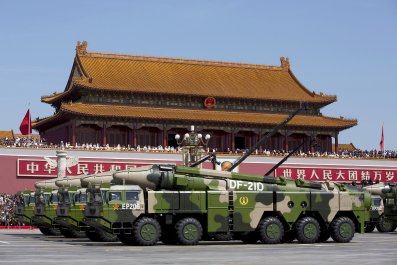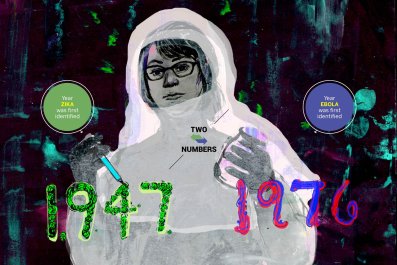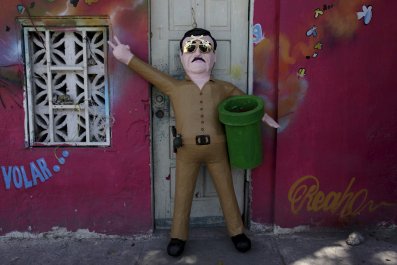The weigh-in before one of the Clash of the Clans fights on February 5 at the Regency Hotel in Dublin looked like the prelude to any other low-level boxing match. Shaky amateur footage from the event shows the crowd's favorite, 25-year-old Jamie Kavanagh, stepping down from the scales. He is wearing blue briefs emblazoned with the Superman logo. Suddenly, gunshots erupt, drowning out the heavy metal music blaring in the background. Kavanagh, along with other spectators, runs across the room in fear. Outside the venue, a child is heard saying: "Daddy, help me. Daddy, Daddy, what was that?"
At least six men stormed the event that day, shooting dead a 33-year-old man named David Byrne and injuring two other people before fleeing. As police began investigating, the BBC received a surprising claim of responsibility. On February 8, a call came in to the British broadcaster. The man identified himself by using a code word. He was a spokesman, he said, for the Continuity Irish Republican Army (CIRA), a small militant group that has not accepted the 1998 peace agreement that largely brought an end to the decades-long conflict in Northern Ireland. The spokesman said the group targeted Byrne as payback for his alleged involvement in the murder of another republican, Alan Ryan, in September 2012. "This will not be an isolated incident," the man told the BBC. "The Continuity IRA will carry out further military operations."
The news of a call to the BBC after the assassination of an alleged political enemy was familiar to many British and Irish citizens. Such events were all too common throughout the 1970s, 1980s and 1990s, the decades in which the conflict over Northern Ireland's status was at its most bloody. More than 3,500 people were killed during what became known as the Troubles. Many people who watched the footage of the chaos at the Dublin weigh-in had assumed that the main Provisional IRA and its splinter groups and opponents were long since finished. Then, on the same day as the CIRA's claim of responsibility, came another act of violence: Four men entered the Dublin house of Eddie Hutch Sr. (the brother of Gerry Hutch, a former career criminal) and shot him dead in an apparent revenge attack. The CIRA immediately made a second statement, contradicting its earlier one. "We have absolutely no involvement in criminal feuds," it said. "We see the false claim that the CIRA were involved in this act as another attempt to tarnish the name of the organization."
There were clues that this claim was true. The victims—Byrne and Hutch Sr.—had links to two well-known criminals, convicted robber Gerry Hutch and convicted drug dealer Christy Kinahan. Last August, Hutch's nephew Gary Hutch was shot dead at an apartment complex in Spain's Costa del Sol. Gary Hutch had allegedly worked for Kinahan, who lives in Spain. Byrne was known to police as an associate of Kinahan. And Gary Hutch may not have been the only target: Kinahan's son was also at the weigh-in, but he managed to escape. A statement from the Irish police said that the February 8 murder of Hutch's brother, Eddie, might have been retaliation for the boxing match shootout. Politics does not seem to have been a primary concern of any of these men.
In the immediate aftermath of the CIRA statement on the shooting, one thing didn't appear to add up: the location. The CIRA tends to carry out its attacks in Northern Ireland, which it believes should be part of a united Ireland. It was there, on March 9, 2009, that the group carried out its last high-profile attack, shooting dead policeman Stephen Carroll in County Armagh. That killing seemed to be part of the republican dissidents' ongoing, if spasmodic, campaign against representatives of the British state. (In March 2014, the group tried and failed to kill a policeman in Belfast using a car bomb.) But the murder of Byrne, in the Republic of Ireland rather than the British province to the north, did not quite fit that political framework. And meanwhile, Ryan was not even a CIRA member. The later killing of Hutch Sr. suggests that the recent killings are likely more a battle between gangs than anything to do with politics.
Ireland's problems with gang violence achieved widespread prominence because of the work and death of Veronica Guerin, an investigative reporter for an Irish newspaper, the Sunday Independent. Guerin wrote about several of Dublin's criminals, including Gerry Hutch. On January 30, 1995, the day after her article on him was published, Guerin opened her front door to find a gunman before her. The man shot her in the leg. A year later, on June 26, 1996, a man riding a motorcycle shot and killed her as she waited in her car at a red light on the outskirts of Dublin. Guerin's murder shocked many in Ireland and led to the government creating the Criminal Assets Bureau, a unit within the police service that identifies funds obtained through criminal conduct.
As the 10th anniversary of Guerin's death approaches, Ireland's police, the Gardaí, seem no closer to ending the gang violence. And a Garda source, who asked to remain anonymous, tells Newsweek that it does not believe the dissident republicans had anything to do with this current feud.
The CIRA emerged in 1986 following a split in the political party Sinn Féin, which analysts have long considered the political wing of the IRA. (The party is polling in third place ahead of Ireland's general election on February 26.) In 1986, Sinn Féin voted to end its policy of political abstentionism and take its elected seats in the Irish Parliament. Dissenting party members formed a new party they called the Republican Sinn Féin. The Council on Foreign Relations, a U.S.-based think tank, says members of that new party then set up the CIRA as its military wing—an allegation the party denies. The CIRA didn't begin its attacks until 1994, when the Provisional IRA agreed to a cease-fire.
Despite its somewhat marginal status within the broader republican movement, the CIRA considers itself the rightful heir to the original IRA. But Sinn Féin has disavowed it. Prior to CIRA retracting its confession, Sinn Féin's president, Gerry Adams, issued a statement about the shooting. "I understand a group calling itself the Continuity IRA has claimed responsibility for the attack at the Regency Hotel," said Adams, who has always denied his own rumored senior leadership role in the Provisional IRA. "They are not the IRA. The IRA are gone, and their weapons are gone."
In recent years, there has been a surge in dissident republican violence, particularly in Northern Ireland. (There are at least two other splinter groups that do not accept the peace deal.) From September 2014 to October 2015, Northern Irish police recorded 15 bombing attacks, seven of which targeted police. Analysts fear that this year could see more violence. April 24, 2016, marks the centenary of the Easter Rising, a five-day rebellion in 1916 against British rule in Ireland. Security experts have voiced concerns that the approaching anniversary could trigger an increase in dissident republican-led attacks.
These fears may explain why many initially believed the caller who claimed responsibility for the CIRA was part of the group. Some think the caller was a criminal trying to send police down a blind alley. This much, however, is known: Republican groups have long had connections to Irish and Northern Irish criminal gangs. "The link between organized crime and terrorism in Ireland is stronger than one might think," says Andy Oppenheimer, author of IRA: The Bombs and the Bullets. "The terrorists have always had connections to criminal gangs. Every terrorist group has to have a supply chain of weapons, materials and money."
In the days after Byrne's death, Dublin remained on a state of high alert. In south Dublin, Kinahan's turf, the city council asked people connected to the convicted criminal to move out, fearing that the cycle of revenge may continue. Armed police patrolled the streets, with checkpoints manned across the capital. The recent killings may turn out to have nothing to do with sectarian violence in the north—but for now Dublin has its own troubles.







